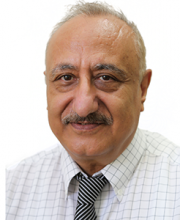You are here
How efficient energy is in Jordan?
Jun 27,2018 - Last updated at Jun 27,2018
Energy efficiency and energy saving ought to be considered as an essential targets in the national energy strategy of Jordan. We have heard plans for a 20 per cent reduction of energy consumption by 2020 based on a baseline year, and we wonder what we have achieved so far.
Electricity consumption per capita increased from 1,712 KWh in 2016 to 1,741 KWh in 2017. Meanwhile, per capita share of primary energy was 981 kilo oil equivalent in 2016 compared with 991 in 2017, according to a report published by the National Electricity Power Company early May 2018.
However, on the optimistic side, there was a drop in energy lost in the electricity grid in 2017 through resistance, which was almost stable between the years 2015 – 2017 at 1.68 per cent and through the electricity stolen from the grid, which decreased from 13.77 per cent in 2016 to 13.1 per cent in 2017. This is a necessary first step towards a more efficient approach to energy.
On another front, the government decided to install energy efficient lamps (LED), solar thermal systems (solar heaters) and photo voltaic cells to produce electricity for those consumers who spend less than 500 KWh a month. Those who ought to be eligible for such support are the household consumers whose monthly consumption does not exceed 160 KWh. This is because their tariff is 33 fils per KWh, well-below the cost of electricity produced, which amounted to 80.95 fils per KWh in 2017. As for consumers who exceed 160 KWh monthly, 161–300 KWh, for example, they pay 72 fils per KWh; when we add taxes, services, difference in oil prices and extras on their bill, they pay more than the cost of electricity. Therefore, the subsidy applies only for those who fall within the first category, 0 – 160 KWh, and they should be a priority to support. Once this category is covered, we can go further up to cover the rest.
Furthermore, saving energy in many sectors needs incentives which do not exist in the tariff system for banks, for example. Banks tariff is not dynamic, it stays at 28.5 fils per KWh regardless of how much electricity is consumed. Therefore, there are no incentives for banks to invest in energy saving and more efficient systems when the return period on investment is not feasible, particularly as banks in general have no space to install PV panels. Their only choice, then, is to buy a lot of land and do a wheeling system. For the electricity company it is a win-win situation because they collect almost 350 per cent profit from what banks consume, while they have raised the wheeling fees by 400 per cent.
A more effective approach would be to set a ceiling limit for banks consumption at a certain category, increasing the tariff even more if that limit is exceeded. Something similar to the case of the commercial sector where the tariff of the first 2,000 KWh monthly consumption is 120 fils per KWh, and the tariff for additional consumption goes up to only 175 fils per KWh making investment in energy efficiency barely encouraging.
However, in the communication sector, the difference in tariffs between the first range of electricity consumption and the next is very little, which does not act as an incentive for change in behaviour or allocating investment of any sort in energy saving or energy efficiency. The tariff for the first 2000 KWh is 23 fils, after which it is raised to 27.3 fils. This applies also to the tariff of small industries, where the first 10,000 KWh pay 71 fils, the rest at 81 fils. The difference is too marginal to invoke action of any sort.
Another misfortune is the difference between tariffs during day and night, which is considered too small to provide an incentive to any factory to work night shift. This would be important not only to encourage energy efficiency and energy saving but it can reduce traffic jams during the day and reduce pressure on the utility grid. In 2017, the maximum load on the grid across the whole year was at 2pm in the afternoon during the month of August when the ambient temperature was at its peak.
The writer is a chartered energy consultant. He contributed this article to The Jordan Times












